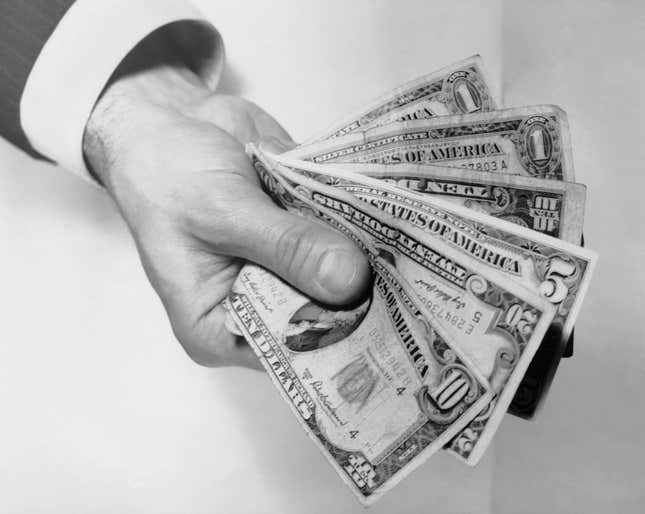
Potential donors might be more inclined to open their wallets if they’re in a good mood, according to a study published in The Economic Journal in June. Two economists, Nathan W. Chan from the University of Massachusetts, Amherst, and Casey Wichman, from the Georgia Institute of Technology, found that people display happier emotions prior to philanthropic acts.
Chan and Wichman scraped social media platform X, formerly Twitter, for data, collecting over three million tweets from more than 20,000 accounts posted across a six-month period. Each tweet included “#iloveWikipedia,” a hashtag that the online encyclopedia includes in its standardized message to signal an individual has donated to the site.
The researchers then used Natural Language Processing (NLP), a form of human speech analysis that employs AI, to score the emotions shown in a tweet on a positive to negative scale. They found evidence that up to an hour before giving, individuals showed a marked increase in positive emotions in their tweets, a phenomenon that they dubbed the “preheating effect.” Their findings also indicated that emotions quickly returned to neutral levels following an act of giving.
“There’s a large amount of literature investigating whether being charitable makes people happier, or whether being happier makes people more charitable. Our paper offers new evidence for the latter,” said Chan in a news post on the UMass Amherst website. The study may be the first of its kind documenting the philanthropic “preheating” phenomenon outside of a controlled environment.
Their findings differ from the “warm glow” theory
Behavioral economists have another theory as to why people donate to charity: because it makes them feel good. Called “warm-glow giving,” the idea is that individuals are generous because they selfishly desire the positive emotional payoff from doing the “right thing.”
Chan and Wichman’s study suggests another way emotional states may influence prosocial behavior. However, the researchers have also noted limitations to their findings. Because the data was fully based on tweets, it could also be that people who are happy about giving are more likely to get to the platform and write about it. The study also did not take into account factors like class, race, age, and gender.
“Sadvertising” is also a proven way to inspire more giving
While happiness may motivate giving, targeting the opposite end of the emotional spectrum can also be a successful strategy to boost donations to a charitable cause. Called “sadvertising,” charities have found that running tear-jerker ads leads to fundraising success. Sarah McLachlan’s commercial for the American Society for the Prevention of Cruelty to Animals, which ran in 2007, is a famous example. The organization raised $30 million in the months after the ad ran, according to a New York Times article published in late 2008, and drew in as many as 200,000 new donors.
Neuroscientist Paul Zak, a professor at Claremont Graduate University, found in one study that certain narratives can inspire both distress and empathy in people, leading to the release of two chemicals in the brain, cortisol and oxytocin. The combination of those two hormones can inspire feelings of connection to a story, and motivate people to help. In short, tugging on people’s heart strings is another sure fire way to bring in more money. But as Chan and Wichman’s study indicates, asking for donations when people are feeling happy could also prove fruitful.
Related stories
🤔 What is the evolutionary purpose of happiness?
😊 Happiness: What’s the secret?
😬 Effective altruism solved all the problems of capitalism—until it didn’t